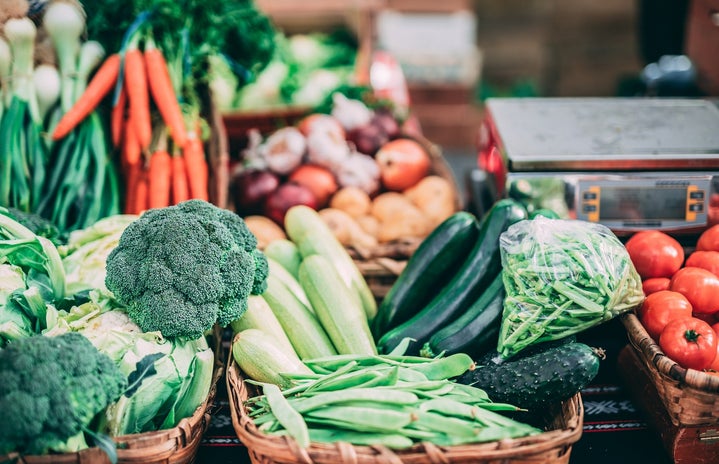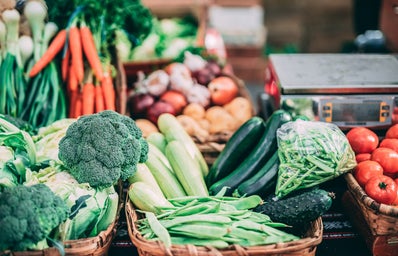“I read somewhere that their eyes have something to do with knowing where your food comes from,” she says on the drive home, clutching the felt baguette between her palms.
I make a right turn and mumble something about ethical consumption under capitalism. Beside me, a $60 dollar felt jar of Nutella looms.
~
“Oh my God, this is so cool,” I exclaim to her, my friend, as we step up to an endcap packed with life-sized felt versions of gum, floss, and cough drops among a myriad of other ten and twenty-dollar products. We’re shopping for food, but while this place may look like a Publix, none of the boxes of Oeros, cans of soda, or packages of meat are edible.
I pick up a sixty-dollar jar of Jif peanut butter and turn it over in my hand, admiring the craftsmanship that went into just this single item. Running my fingers down the front, I savor the textures of soft felt, ribbed stitching, and the fabric glue that make out the logo–a perfect copy of the real thing. On the back, the artist’s signature is painted; its texture is rough of the pads of my fingers. The whole place is like this, from a fully stocked vegetable stand, thirty dollars an item, to the salad bar. All the food here has been made, by hand, with felt and stuffing. It’s a space bigger than my whole dorm, handcrafted into a realistic representation of a local grocery store; I choose Publix. “Tampa Fresh Foods” is a place where the hungry will starve, and the artists can glutton themselves. I’m sure there’s a metaphor there.
On linoleum floors, we shuffle past shelves of crackers and cookies, condiments, and feminine products. Green walls surround us, the brightness of fluorescent light our path through the maze of soft, colorful art. The last time I played with fake food was at MOSI when I was 11; my hands itch to play cashier with these labors of love.
Googly eyes, blank, telling, stare at me from below my waist. The meat counter sports chicken breasts, pork chops, a rope of sausage links, bacon, you name it. The display calls to me; expressionless faces hold the reminder of my own mortality. “You are meat,” they say, “and we are not.”
I follow the philosophy of believing I will live forever; it helps that I am young. It helps that I am alive. Yet these sacks of stuffing and beads, dead as their ready-to-purchase counterparts, are what will survive the Next World War. When the radiation peels my skin from my bones, someone’s sixty-dollar lamb chop will still be there collecting dust.
I pick a clam, ten dollars, barely the size of a ping pong ball, up from the seafood counter. Its fleshy felt face peers up at me innocently. It disappears within its grey, ribbed shell when I close my fist. It’s one of twenty and a minuscule percentage of this world.
“What kind of crazy mind thinks to do that?” My professor had said about the installation.
“A bit hypocritical considering you’re a writer,” I’d said back.
Now that I’m here, I recognize something true in the piles of tomatoes, a single avocado, a two-foot Baggett. I see the artist as she sewed this; imagine her fever, her reverence, how her hands must have trembled, itching to create. The muse that lives within her took over and commanded she make a dent here. In this world of overpriced eight-ounce bags of cereal and organic chickens that cost thirty dollars, she had been possessed to raise the stakes, raise the price. She’s made herself immortal now through the art of cutting out the middleman: the food. There’s a metaphor there, I’m sure.


